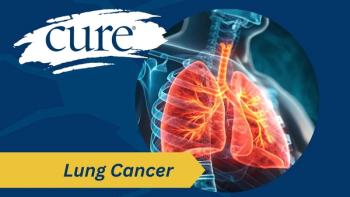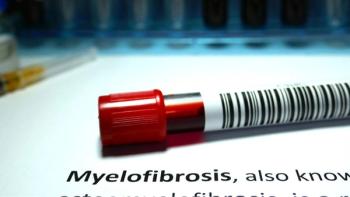Among patients with resectable non-small-cell lung cancer (NSCLC), chemoimmunotherapy, both before and after surgery, continues to show promising results, demonstrating long-term benefits without concerning safety data.
According to study findings from the phase 2 NADIM clinical trial published in The Lancet, “NADIM is the first trial investigating the value of perioperative immunotherapy to provide information on five-year survival,” study authors wrote. “Our results showed an encouraging long-term benefit and support the use of perioperative immunotherapy as a standard of care for patients with potentially resectable stage 3A NSCLC.”
After a median follow-up of 60 months, the five-year progression-free survival in the intention-to-treat population was 65% and the overall survival was 69.3%. Eleven patients who showed disease progression and 14 died — nine from disease relapse and five from non-tumor-related causes (three due to COVID-19, one due to pneumonia and one due to pancreatic cancer).
Three disease relapses were local, three were both local and distant, four were exclusively distant and one was clinically determined (i.e., based on worsening of clinical symptoms).
Glossary:
Chemoimmunotherapy: combines both chemotherapy and immunotherapy to treat cancer.
Progression-free survival: the time from diagnosis to objective tumor progression or death from any cause.
Overall Survival: the time from diagnosis to date of death by any cause.
Neoadjuvant: given before the primary treatment.
Adjuvant: given after primary treatment.
Lipase: a protein enzyme that breaks down fats in food. Elevated levels can indicate pancreatitis.
Serum lipase: measurement of lipase levels.
Serum amylase: a blood tests that measures the level of amylase in the body. Elevated levels can indicate pancreatitis.
Neutropenia: a lack of white blood cells.
Febrile Neutropenia: when a patient’s white blood cell count drops very low and they develop a fever.
Intravenous: through the vein.
Area under the curve: a measure of how much drug reaches a person's bloodstream in a given period of time after a dose is given.
“From 29 months onwards in the NADIM trial, there were no tumor-related relapses, suggesting that patients disease-free beyond the three-year mark might be considered cured,” study authors wrote. “This aspect is highly informative, as there is uncertainty about the long-term benefit and clinical relevance of neoadjuvant chemoimmunotherapy, given that none of the current pivotal studies … extend to our minimum follow- up.”
Patients who strictly followed the study protocol had better outcomes than those who did not. The per-protocol group demonstrated a five-year progression-free survival of 75.4% and a five-year overall survival of 78%. The non-per-protocol group had significantly lower rates of 22.2% and 33.3%, respectively.
Regarding side effects, severe or worse treatment-related side effects occurred in 14 out of 46 patients during neoadjuvant treatment and seven out of 37 during adjuvant treatment. Severe or worse grade treatment-related side effects included three cases each of lipase and febrile neutropenia during neoadjuvant treatment, four cases of elevated serum lipase and three cases of serum amylase during adjuvant treatment. In addition, the adjuvant setting reported 32 out of 37 patients with mild to moderate grade side effects.
Treatment-related side effects that were considered serious included one case of elevated serum lipase and one case of neutropenia during neoadjuvant treatment and one case of elevated serum lipase during adjuvant treatment. Treatment-related surgery delays, deaths, or unexpected long-term toxicities were not reported throughout the study; however, three patients were unable to receive adjuvant Opdivo due to treatment-related side effects that developed during neoadjuvant treatment. In total, adjuvant Opdivo was discontinued in five patients due to treatment-related side effects.
A total of 46 patients with a median age of 63 years were eligible to receive neoadjuvant and adjuvant treatment. Neoadjuvant therapy comprised three cycles of intravenous paclitaxel (200 milligrams [mg] per square meter), carboplatin (area under the curve 6 mg per milliliter per minute) and Opdivo (nivolumab; 360 mg). Adjuvant therapy involved one year of intravenous Opdivo monotherapy (240 mg every two weeks for four months, followed by 480 mg every four weeks for eight months).
Patients who were ineligible to participate in the trial included documented EGFR mutations or ALK translocations, active autoimmune or infectious disease, current treatment with immunosuppressive drugs and a history of symptomatic interstitial lung disease classified as severe or life-threatening.
The primary goal of the study was progression-free survival over the course of 24 months. The secondary focus included five-year progression-free survival and overall survival, assessed in the intention-to-treat population.
Reference:
“Perioperative chemotherapy and nivolumab in non-small- cell lung cancer (NADIM): 5-year clinical outcomes from a multicentre, single-arm, phase 2 trial” by Dr. Mariano Provencio, et al., Lancet.
For more news on cancer updates, research and education, don’t forget to subscribe to CURE®’s newsletters here.





